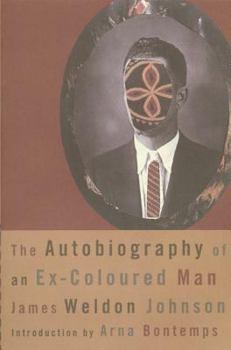The Autobiography of an Ex-Coloured Man
Select Format
Select Condition 
Book Overview
James Weldon Johnson's emotionally gripping novel is a landmark in black literary history and, more than eighty years after its original anonymous publication, a classic of American fiction.
The first fictional memoir ever written by a black, The Autobiography of an Ex-Coloured Man influenced a generation of writers during the Harlem Renaissance and served as eloquent inspiration for Zora Neale Hurston, Ralph Ellison, and Richard Wright. In the 1920s and since, it has also given white readers a startling new perspective on their own culture, revealing to many the double standard of racial identity imposed on black Americans. Narrated by a mulatto man whose light skin allows him to "pass" for white, the novel describes a pilgrimage through America's color lines at the turn of the century--from a black college in Jacksonville to an elite New York nightclub, from the rural South to the white suburbs of the Northeast. This is a powerful, unsentimental examination of race in America, a hymn to the anguish of forging an identity in a nation obsessed with color. And, as Arna Bontemps pointed out decades ago, "the problems of the artist as presented here] seem as contemporary as if the book had been written this year."Format:Paperback
Language:English
ISBN:0809000326
ISBN13:9780809000326
Release Date:March 1991
Publisher:Farrar, Strauss & Giroux-3pl
Length:212 Pages
Weight:0.51 lbs.
Dimensions:0.6" x 5.4" x 8.4"
Customer Reviews
5 ratings
A must read
Published by A , 5 years ago
I bought the book because I had to read it for a literature class. However, once I picked it up I could not put it down. This is a very good read and I highly recommend it.
What is wrong with some of these reviewers?
Published by Thriftbooks.com User , 18 years ago
This book is excellent. I read it for a class in college years and years ago... and I still think about it.
Spellbinding and relevant
Published by Thriftbooks.com User , 23 years ago
For a book which was first published in 1912, this is an amazingly relevant work for today. Johnson's novel (hidden in the form of an autobiography) graphically looks at relations between the races in American. The nameless main character is born in the South to an African-American mother and a white Southern aristocrat. He and his mother move to Connecticut when he is very young, allowing Johnson to show us the benevolent face of pervasive racism of the United States. Johnson avoids the easy "good" vs. "evil" view of the oppressed vs. the oppressors. Instead, the narrator becomes a permanent outcast, returning to the South upon the death of his mother and then to the ragtime era New York City. The style of the novel is clear and extremely readable--and very current. The end of the novel dives deep into the issue of racism, causing both black and white readers to question their long-held assumptions about who they are and who they appear to be to others.
Sorely needed perspective
Published by Thriftbooks.com User , 24 years ago
In most literature dealing with race relations, we get either the black perspective or the white perspective. This book is a refreshing reminder that there are shades of gray as well. Johnson's prose is very fluid and, unlike some other reviewrs, I found the story line engaging. Finally, a remark about the last line--whether or not one agrees with Johnson's assessment, it is certainly the type of statement that stays with the reader long after the book has been put down.
The Search for American Identity
Published by Thriftbooks.com User , 25 years ago
Johnson's novel travels through various African-American societies (New England, Jacksonville, New York City, the Black Belt) in a story of a mulatto caught between two opposing racial identities. The novel is an epic journey (emotionally and physically) of this African-American, who is light enough to "pass" into the white American dominating the turn-of-the century. The Ex-Coloured Man's personal struggles to reconcile his true private self with his public self in a divided and prejudiced society makes this novel an emotional and enlightening read. Johnson takes up the issue of WEB DuBois's double-consciousness, and gives it life in the form of this ambivalent protagonist.
The Autobiography of an Ex-Colored Man Mentions in Our Blog

The Glory of the Harlem Renaissance
Published by William Shelton • February 17, 2023
Langston Hughes described the experience of the Harlem Renaissance as "…to express our individual dark-skinned selves without fear or shame." It was a movement of the senses, steps quickened to the sound of Jazz and Blues, the air was redolent of food reminiscent of Carolina and the Caribbean, the mind was stimulated by new ideas, and the energy was like an electric current to a wire.






